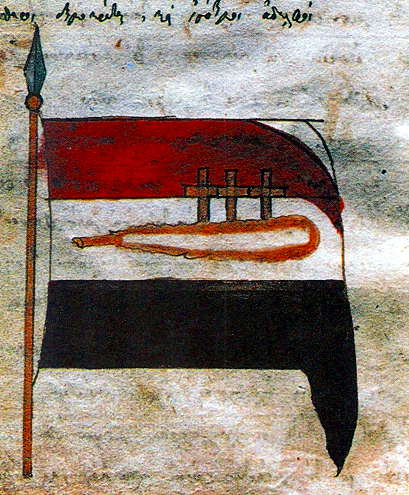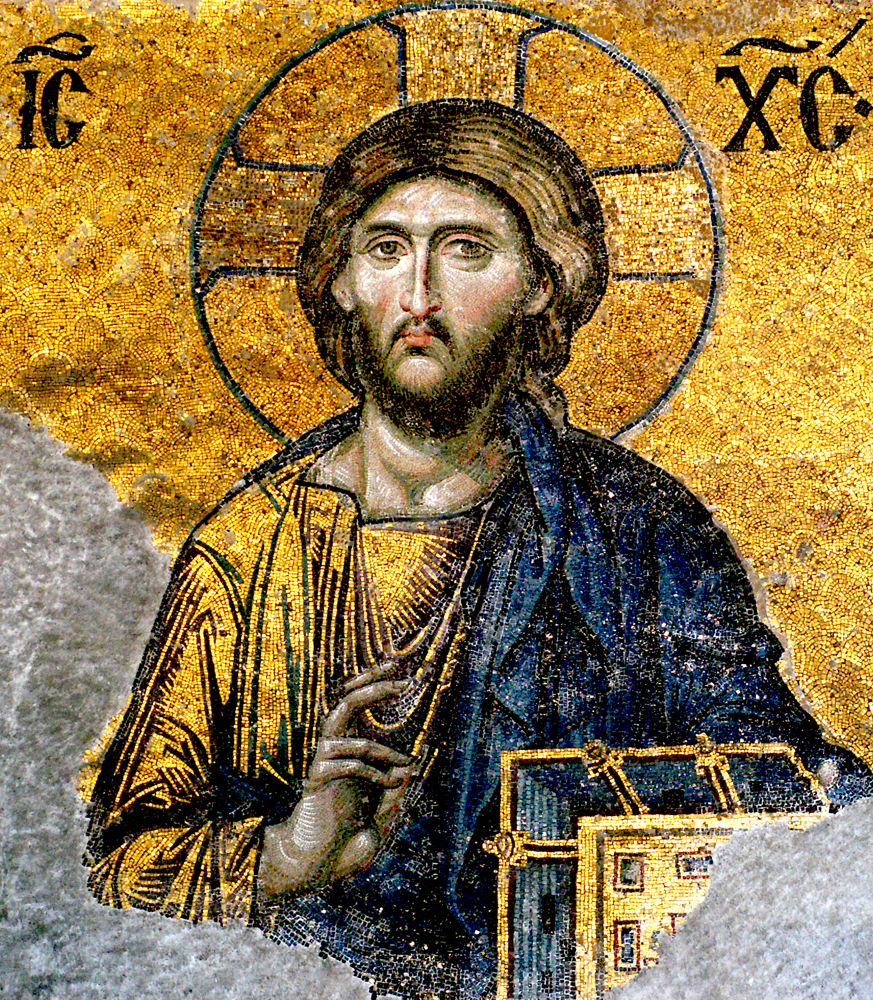|
Greek Church (Bucharest)
The Greek Church () is a Romanian Orthodox church located at 1 Pache Protopopescu Square in Bucharest, Romania, on the grounds of the Greek Embassy. It is dedicated to the Feast of the Annunciation. History The church was built on the site of an old Greek cemetery that once extended until Foișorul de Foc. During the 19th century, members of the local Greek community did not have their own church, instead worshiping at other parishes, in particular the Kalenderoglu Church. The idea of building a specifically Greek church appeared as early as 1874, but internal divisions and lack of land, authorization and funds delayed the start of construction for a quarter century. In 1890, a local Greek banker expressed a desire to build a church. The Bucharest City Hall soon granted the embassy’s request for it to cede land on which this could be built, together with a school. In 1898, the lot, measuring some 1900 square meters, was purchased by the Greek chargé d’affaires. Constructi ... [...More Info...] [...Related Items...] OR: [Wikipedia] [Google] [Baidu] |
Iconostasis
In Eastern Christianity, an iconostasis () is a wall of icons and religious paintings, separating the nave from the sanctuary in a Church (building), church. ''Iconostasis'' also refers to a portable icon stand that can be placed anywhere within a church. The iconostasis evolved from the Byzantine architecture, Byzantine templon, a process complete by the 15th century. A direct comparison for the function of the main iconostasis can be made to the layout of the great Temple in Jerusalem. That Temple was designed with three parts. The holiest and inner-most portion was that where the Ark of the Covenant was kept. This portion, the Holy of Holies, was separated from the second larger part of the building's interior by a curtain, the parochet , "veil of the temple". Only the High Priest (Judaism), High Priest was allowed to enter the Holy of Holies. The third part was the entrance court. This architectural tradition for the two main parts can be seen carried forward in Christian ... [...More Info...] [...Related Items...] OR: [Wikipedia] [Google] [Baidu] |
Greek Diaspora In Romania
Greek may refer to: Anything of, from, or related to Greece, a country in Southern Europe: *Greeks, an ethnic group *Greek language, a branch of the Indo-European language family **Proto-Greek language, the assumed last common ancestor of all known varieties of Greek **Mycenaean Greek, most ancient attested form of the language (16th to 11th centuries BC) **Ancient Greek, forms of the language used c. 1000–330 BC **Koine Greek Koine Greek (, ), also variously known as Hellenistic Greek, common Attic, the Alexandrian dialect, Biblical Greek, Septuagint Greek or New Testament Greek, was the koiné language, common supra-regional form of Greek language, Greek spoken and ..., common form of Greek spoken and written during Classical antiquity **Medieval Greek or Byzantine Language, language used between the Middle Ages and the Ottoman conquest of Constantinople **Modern Greek, varieties spoken in the modern era (from 1453 AD) *Greek alphabet, script used to write the Greek langua ... [...More Info...] [...Related Items...] OR: [Wikipedia] [Google] [Baidu] |
Churches Completed In 1901
Church may refer to: Religion * Church (building), a place/building for Christian religious activities and praying * Church (congregation), a local congregation of a Christian denomination * Church service, a formalized period of Christian communal worship * Christian denomination, a Christian organization with distinct doctrine and practice * Christian Church, either the collective body of all Christian believers, or early Christianity Places United Kingdom * Church, a former electoral ward of Kensington and Chelsea London Borough Council that existed from 1964 to 2002 * Church (Liverpool ward), a Liverpool City Council ward * Church (Reading ward), a Reading Borough Council ward * Church (Sefton ward), a Metropolitan Borough of Sefton ward * Church, Lancashire, England United States * Church, Iowa, an unincorporated community * Church Lake, a lake in Minnesota * Church, Michigan, ghost town Arts, entertainment, and media * '' Church magazine'', a pastoral theology mag ... [...More Info...] [...Related Items...] OR: [Wikipedia] [Google] [Baidu] |
Romanian Orthodox Churches In Bucharest
Romanian may refer to: *anything of, from, or related to the country and nation of Romania **Romanians, an ethnic group **Romanian language, a Romance language ***Romanian dialects, variants of the Romanian language **Romanian cuisine, traditional foods **Romanian folklore *'' The Romanian: Story of an Obsession'', a 2004 novel by Bruce Benderson *''Românul ''Românul'' (, meaning "The Romanian"; originally spelled ''Romanulu'' or ''Românulŭ'', also known as ''Romînul'', ''Concordia'', ''Libertatea'' and ''Consciinti'a Nationala''), was a political and literary newspaper published in Bucharest, Ro ...'' (), a newspaper published in Bucharest, Romania, 1857–1905 See also * * {{disambiguation Language and nationality disambiguation pages ... [...More Info...] [...Related Items...] OR: [Wikipedia] [Google] [Baidu] |
Historic Monuments In Bucharest
History is the systematic study of the past, focusing primarily on the Human history, human past. As an academic discipline, it analyses and interprets evidence to construct narratives about what happened and explain why it happened. Some theorists categorize history as a social science, while others see it as part of the humanities or consider it a hybrid discipline. Similar debates surround the purpose of history—for example, whether its main aim is theoretical, to uncover the truth, or practical, to learn lessons from the past. In a more general sense, the term ''history'' refers not to an academic field but to the past itself, times in the past, or to individual texts about the past. Historical research relies on Primary source, primary and secondary sources to reconstruct past events and validate interpretations. Source criticism is used to evaluate these sources, assessing their authenticity, content, and reliability. Historians strive to integrate the perspectives o ... [...More Info...] [...Related Items...] OR: [Wikipedia] [Google] [Baidu] |
Ministry Of Culture And Religious Affairs (Romania)
The Ministry of Culture of Romania () is one of the ministries of the Government of Romania. The current position holder is Natalia-Elena Intotero from the Social Democratic Party (Romania), Social Democratic Party (PSD). The Romanian National Institute of Historical Monuments, part of this ministry, maintains the List of monumente istorice in Romania, list of historical monuments in Romania. The list, created in 2004–2005, contains Monument istoric, historical monuments entered in the National Cultural Heritage of Romania. List of Culture Ministers See also * Culture of Romania * List of monumente istorice in Romania, List of historical monuments in Romania References External links MCC.ro* GUV.roRomanian National Institute of Historical MonumentsList of Historical Monumentsat Romanian Ministry of Culture and National Patrimony (in Romanian) at Romanian National Institute of Historical Monuments (in Romanian) Government ministries of Romania, Culture Cult ... [...More Info...] [...Related Items...] OR: [Wikipedia] [Google] [Baidu] |
Monument Istoric
The National Register of Historic Monuments () is the official English name of the Romania government's list of national heritage sites known as Monumente istorice. In Romania, these include sites, buildings, structures, and objects considered worthy of preservation due to the importance of their Romanian cultural heritage. The list, created in 2004, contains places that have been designated by the Ministry of Culture and National Patrimony of Romania and are maintained by the Romanian National Institute of Historical Monuments, as being of national historic significance. Criteria A ''Monument istoric'' ("Historic monument") is defined as: * An architectural or sculptural work, or archaeological site. * Having significant cultural heritage value, and of immovable scale. * Perpetuating the memory of an event, place, or historical personality. ''Monumente istorice'' cultural properties include listed Romanian historical monuments from the National Register of Historic Monume ... [...More Info...] [...Related Items...] OR: [Wikipedia] [Google] [Baidu] |
Rigas Feraios
Rigas Feraios ( , sometimes ''Rhegas Pheraeos''; ) or Velestinlis (Βελεστινλής , also transliterated ''Velestinles''); 1757 – 24 June 1798), born as Antonios Rigas Velestinlis (), was a Greek writer, political thinker and revolutionary, active in the Modern Greek Enlightenment. A victim of the Balkan uprising against the Ottoman Empire and a pioneer of the Greek War of Independence, Rigas Feraios is today remembered as a national hero in Greece. Early life Rigas Feraios was born in 1757 as Antonios Rigas Velestinlis into a wealthy family in the village of Velestino in the Sanjak of Tirhala, Ottoman Empire (modern Thessaly, Greece). His father's name is believed to have been originally Georgios Kyratzis or Kyriazis. According to his compatriot Christoforos Perraivos, Rigas was educated at the school of Ampelakia, Larissa. Perhaps Rigas took lower education there, because it is historically documented that Rigas was educated at the upper school "Ellinomouseion" ... [...More Info...] [...Related Items...] OR: [Wikipedia] [Google] [Baidu] |
Christ Pantocrator
In Christian iconography, Christ Pantocrator (, ) is a specific depiction of Christ. or , literally 'ruler of all', but usually translated as 'almighty' or 'all-powerful', is derived from one of many names of God in Judaism. The Pantokrator is largely an Eastern Orthodox, Eastern Catholic or Eastern Lutheran theological conception and is less common under that name in Latin Catholicism and Western Lutheranism. In the West, the equivalent image in art is known as Christ in Majesty, which developed a rather different iconography. ''Christ Pantocrator'' has come to suggest Christ as a benevolent, though also stern and all-powerful, judge of humanity. When the Hebrew Bible was translated into Greek as the Septuagint, ''Pantokrator'' was used both for ''YHWH Sabaoth'' () " Lord of Hosts" and for '' El Shaddai'' " God Almighty". In the New Testament, ''Pantokrator'' is used once by Paul () and nine times in the Book of Revelation: , , , , , , , , and . The references to God the F ... [...More Info...] [...Related Items...] OR: [Wikipedia] [Google] [Baidu] |
Cathedra
A ''cathedra'' is the throne of a bishop in the early Christian basilica. When used with this meaning, it may also be called the bishop's throne. With time, the related term ''cathedral'' became synonymous with the "seat", or principal church, of a bishopric. The word in modern languages derives from a normal Greek word καθέδρα 'kathédra'' meaning "seat", with no special religious connotations, and the Latin ''cathedra'', specifically a chair with arms. It is a symbol of the bishop's teaching authority in the Catholic Church, the Orthodox Church, and the Anglican Communion churches. Etymology The English word "cathedra", plural cathedrae, comes from the Latin word for "armchair", itself derived from the Greek (καθέδρα). After the 4th century, the term's Roman connotations of authority reserved for the Emperor were adopted by bishops. It is closely related to the etymology of the word chair. ''Cathedrae apostolorum'' The term appears in early Chr ... [...More Info...] [...Related Items...] OR: [Wikipedia] [Google] [Baidu] |
Baldachin
A baldachin, or baldaquin (from ), is a canopy of state typically placed over an altar or throne. It had its beginnings as a cloth canopy, but in other cases it is a sturdy, permanent Architecture, architectural feature, particularly over Altar, high altars in cathedrals, where such a structure is more correctly called a Ciborium (architecture), ciborium when it is sufficiently architectural in form. Baldachins are often supported on columns, especially when they are disconnected from an enclosing wall. A cloth of honour or cloth of estate is a simpler cloth hanging vertically behind the throne, usually continuing to form a canopy. It can also be used for similar canopies in interior design, for example above beds, and for processional canopies used in formal state ceremonies such as coronations, held up by four or more men with poles attached to the corners of the cloth. "''Baldachin''" was originally a luxurious type of cloth from Baghdad, from which name the word is ultimat ... [...More Info...] [...Related Items...] OR: [Wikipedia] [Google] [Baidu] |



